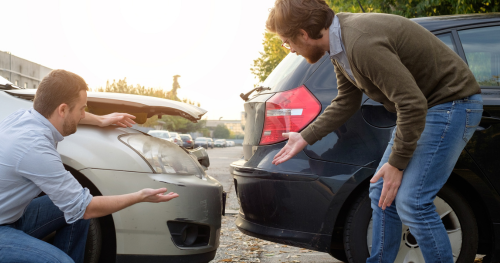
Car accidents can be complex events with shared responsibility. It’s not uncommon for both drivers to make mistakes like texting or exceeding the speed limit that lead to the crash. In Florida, the law takes into account each driver’s part in causing the accident by assigning a percentage of fault to everyone involved.
If you’re injured in a Miami car crash, it’s crucial to understand how these laws affect your potential compensation. An Aigen Injury Law, our Miami car accident lawyers can help minimize your share of the fault so you secure the highest possible settlement for your injuries.
What is Comparative Negligence?
Comparative negligence is a legal concept used to evaluate the responsibility for an accident when multiple parties may be at fault. For example, two drivers collide at an intersection: one ran a red light while the other was speeding. In this case, both drivers’ actions contributed to the accident.
Under comparative negligence laws, the court quantifies each driver’s level of fault in a percentage. This number directly affects how much compensation, if any, each party can claim: the percentage of each victim’s fault is subtracted from their damage award.
For example, if you are found to be 30% at fault for an accident and the total damages amount to $100,000, you would be eligible to recover 70%, or $70,000. This system ensures that damages reflect each party’s contribution to the accident.
How Does Comparative Negligence Work in Florida?
Until early 2023, Florida used a pure comparative negligence approach to car accident liability. Under this system, you could be found up to 99% at fault and still recover a portion of the damages.
In March 2023, the state adopted a modified comparative negligence doctrine. This means recovery is only possible if you are at most 50% at fault. This change has major implications for those involved in car accidents.
Here are two examples to illustrate how this new approach can affect a settlement:
- Over 50% at fault. You’re in an accident where the other driver failed to yield, but you were speeding. After assessing the evidence, the court finds you 55% responsible because your speed was a factor in the accident. This bars you from recovering any damages, even though the other driver was partially at fault and your injuries are severe.
- Under 50%. You’re hit by a driver who ran a stop sign while you were driving with a broken taillight. The jury decided your non-functioning taillight made you 20% responsible for the collision. This means you can still recover 80% of your total damages. For instance, if you claimed $10,000 worth of damage, you would receive $8,000.
Reducing Your Share of Fault for Maximum Compensation
Minimizing your share of fault in multi-liability car crashes is crucial to receiving maximum compensation for your injuries and damages. Our experienced car accident lawyers at Aigen Injury Law can do the following to help minimize your percentage of fault and get you a fair settlement:
- Gather evidence. Our attorneys can collect and present all available evidence from the crash site, such as traffic camera footage, vehicle damage, and skid marks on the road, to construct a narrative highlighting other factors or parties at fault.
- Obtain witness statements. We can obtain statements from eyewitnesses who can attest to elements like the other driver’s erratic behavior or traffic violations, which could shift additional fault away from you.
- Analyze police reports. By analyzing the police reports, our lawyers can identify recorded observations or test results, such as sobriety tests, which might indicate the other driver’s fault or negligence.
- Accident reconstruction. Our team can consult accident reconstruction specialists to scientifically explain the crash, possibly revealing details that prove the other party’s higher degree of fault.
- Consult traffic experts. Traffic experts can offer professional insights into the driving conditions and behaviors at play, which our lawyers can use to argue for a lower fault percentage on your part.
- Review footage. We can scrutinize footage to identify the exact movements of each vehicle involved, potentially showing that the other driver’s actions were the primary cause of the crash.
- Cross-examine the other driver’s testimony. Our lawyers can cross-examine the other driver’s claims, looking for discrepancies that can be used to establish a more favorable fault distribution for you.
Get Skilled Legal Help After a Crash
To maximize your chances of receiving fair compensation after a crash in Florida, speak with an experienced car accident attorney from Aigen Injury Law. We can use our legal knowledge and negotiation skills to prove liability against the other party and help you get the settlement you deserve.
Contact us today for a free consultation where we can discuss your case and help you get started on your claim.